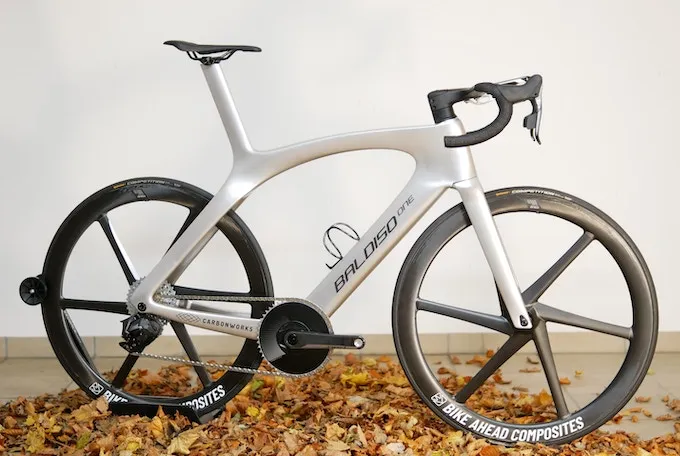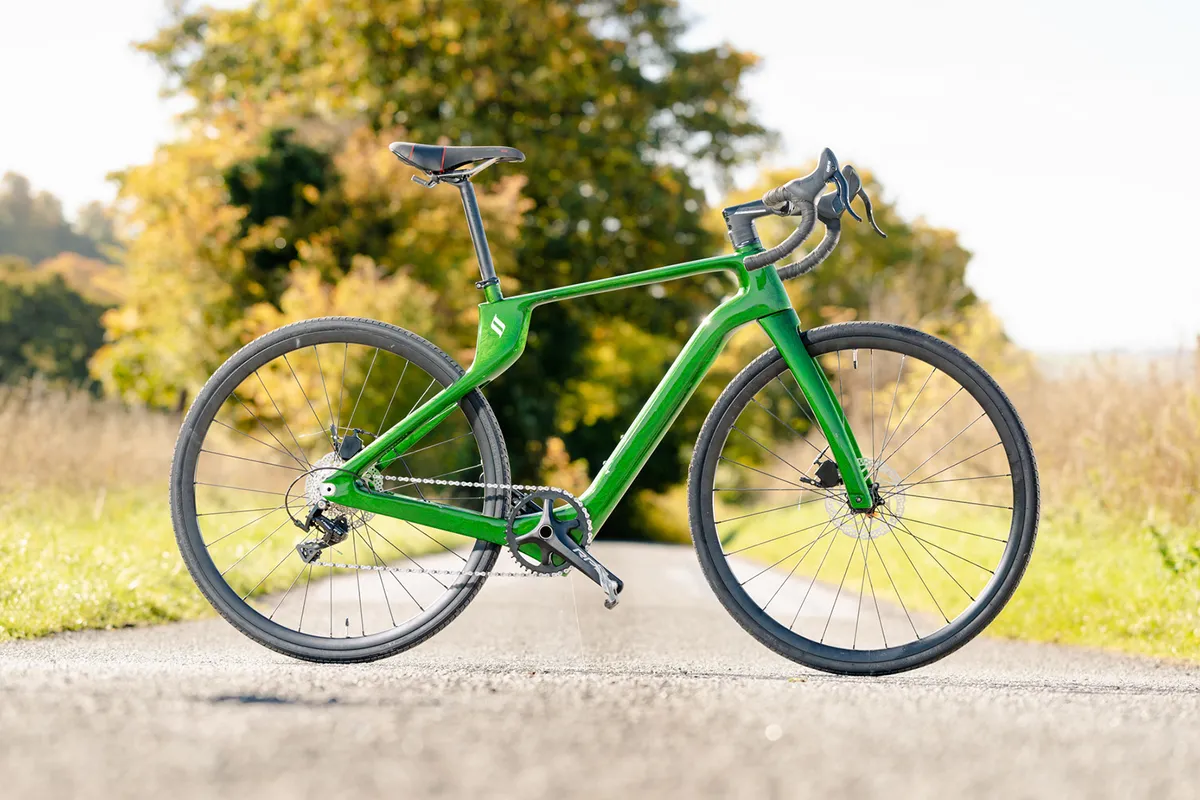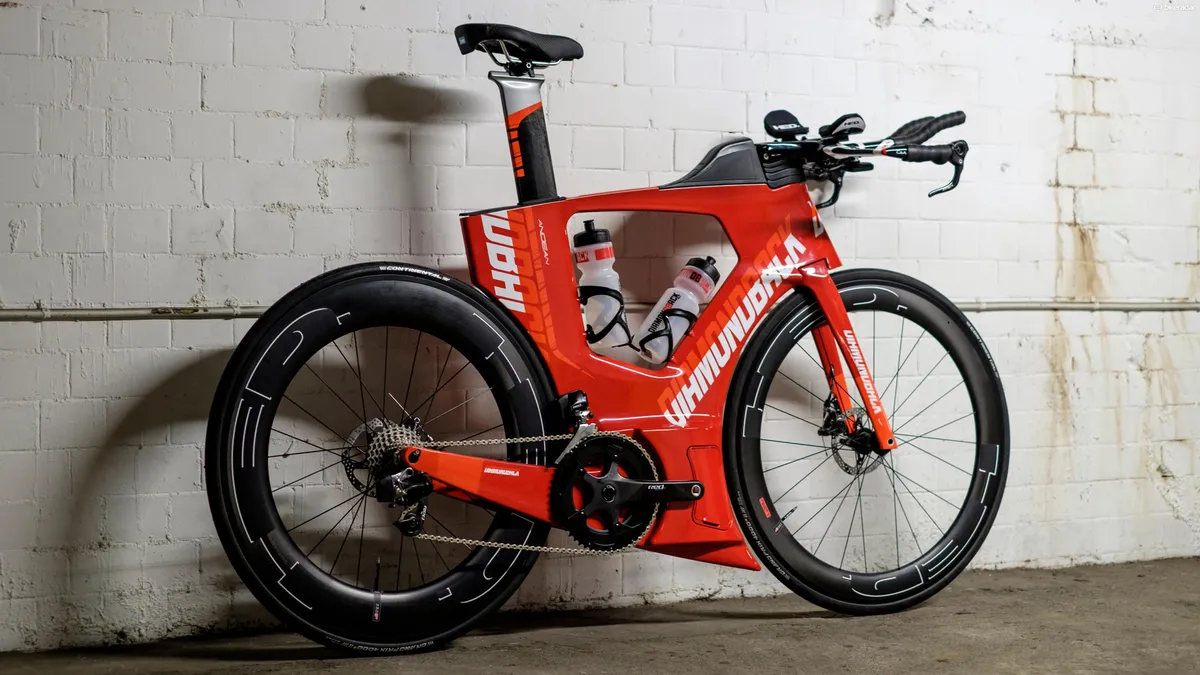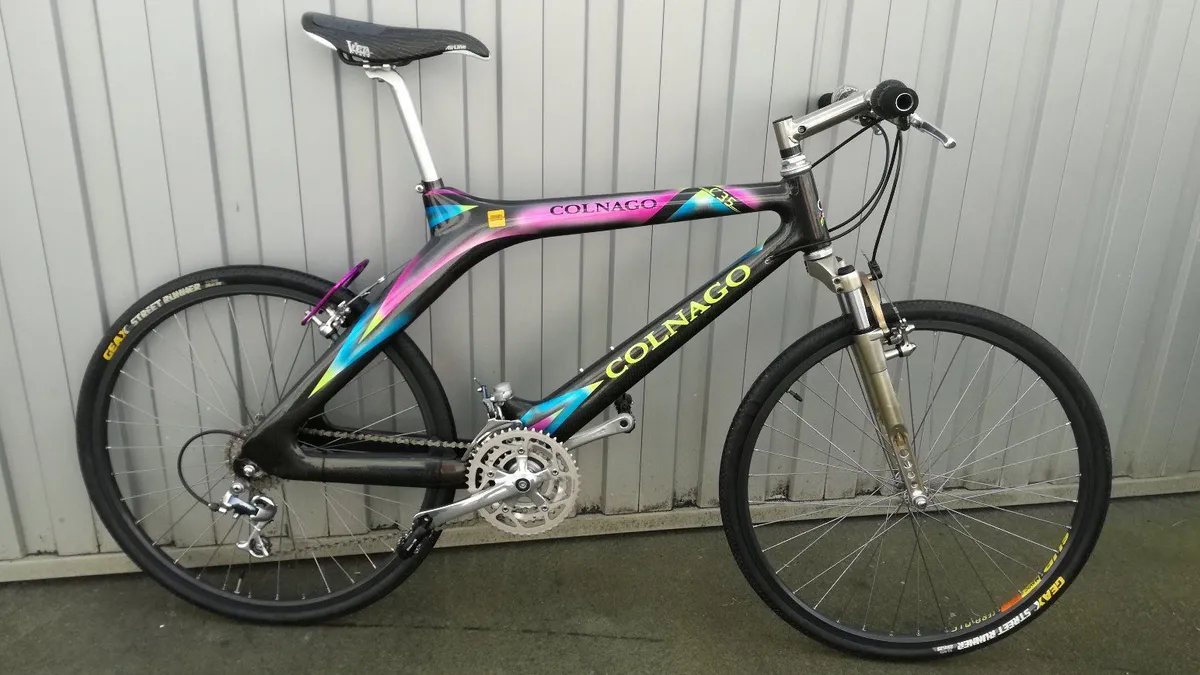Contemporary brands promising to ‘challenge the norm’ of cycling design have a strangely consistent obsession with releasing bikes without seat tubes.
There’s a well of recent examples to draw from: Urwahn’s range, the Gogoro Eeyo and early versions of AOI’s bikes all spring to mind. That’s not to mention the infamous Superstrata Classic, which we reviewed in 2022, ‘awarding’ it a rarely seen one-star score.
Even Colnago was at it back in the 90s with its C35 mountain bike created in collaboration with Ferrari.
The CarbonWorks Baldiso One is the latest bike to go without a seat tube.
Launched last week on Kickstarter, the brand’s founders say they designed the bike’s €5,610 frameset without a seat tube to “stand out from the crowd… and attract attention”.
Speaking to BikeRadar, designer Simon Bühler elaborated further, saying he wanted to design a bike that is “pleasing to the eye – a bike that is simply fun to ride”.

This bike, and others without seat tubes, leave me with mixed feelings.
On the one hand, I’ll never go out of my way to yuck somebody’s yum.
There’s nothing wrong with owning a bike, or any object for that matter, for the sheer joy of its unusual design.
Sure, a straight drinking straw works, but a curly multi-coloured spectacle-shaped straw? Fun!
The Baldiso One certainly delivers in this regard, and you may think it looks pretty damn cool.
On the other hand…
Doubtful performance claims

Claimed performance benefits of a seat-tube-less bike typically focus on reducing weight and aerodynamic drag, while improving comfort.
Let’s start with weight. Nothing is, after all, lighter than something, so a bike without a seat tube should be lighter, right?
Sadly not. In the case of the Superstrata Classic, doing away with the seat tube resulted in a heavier bike than a conventional design, because the other tubes had to be strengthened to provide an acceptable level of stiffness.
What about aero performance then? It’s not unreasonable to assume a frame without a seat tube may be more aerodynamic than a conventional frame.

Trek went as far as moulding a great big hole into the seat tube of its latest Madone in a bid to improve aero performance (and comfort), so maybe there’s something to it.
However, as far as we know, no contemporary brand that has produced a seat-tube-less bike has offered up aero-testing data to back up its claims of improved performance, so we can’t say for certain.
That’s perhaps understandable – most brands that have brought bikes without seat tubes to market are crowdfunded start-ups, and aero testing is an expensive business.

But there is plenty of money and testing behind triathlon bikes, which are typically unusual (read: completely bizarre). If there was a significant aero advantage to be had by removing a seat tube, I think we would have seen such bikes become commonplace – in triathlon, at least – long ago.

Finally, what about comfort?
I can only point to the Superstrata Classic for a real-world example, which tester Warren Rossiter described as “quite comfortable”. That’s hardly glowing praise, but not a withering criticism either.
This one example aside, it’s fair to question whether removing the seat tube is the right way to make a bike more comfortable when good ol’ suspension, or systems such as Trek’s IsoSpeed, already exist.
I’m not convinced a theoretical increase in passive comfort outweighs the downsides presented in other areas.
Strokes for folks… maybe
Of course, as I said earlier, performance is only part of what makes a bike ‘good’. Maybe the unusual looks of the Baldiso B1 tickle your pickle, and that’s fine.
Equally, perhaps the Baldiso One will smash its crowdfunding goal and deliver the goods on its performance claims.
On the other hand, bikes without seat tubes generally present too many theoretical and practical performance compromises to justify their quirkiness.
Brands shouldn’t be afraid to try new things but, if making a performance bike is your goal, seat-tube-less bikes are a design fad best consigned to history.
